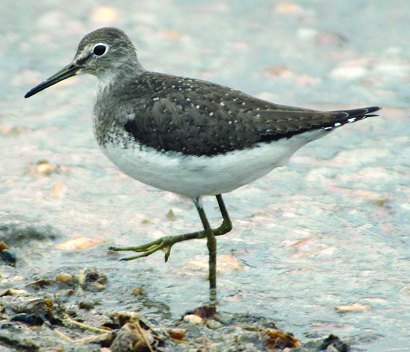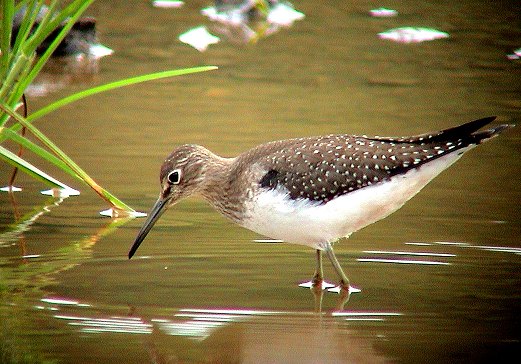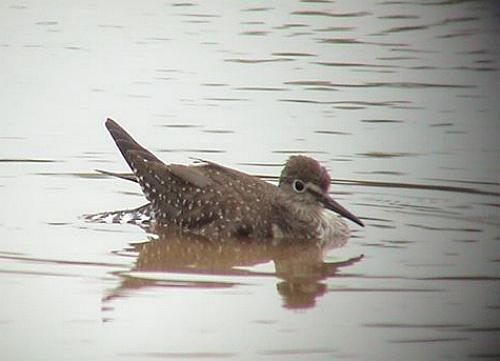|
Solitary Sandpiper Tringa solitaria Andarríos Solitario,
|
 |
|
Photo: G. Beaton
|
|
IDENTIFICATION: A thin sandpiper that teeters and bobs up and down as it walks. It has an olive back with white spots, and a white eye ring. Length: 19-23 cm.; weight: 38-69 g. VOICE: The alarm call, given in flight, consists of three notes "wheet-wheet-wheet"----higher in pitch than the call of the more common Spotted Sandpiper. HABITAT: Small pools of freshwater, ditches, puddles in wetlands, fields and pastures. HABITS: The Solitary Sandpiper is well named, since it tends to forage and migrate alone or in very small flocks. It often stands motionless for long periods, then quickly plucks fly larvae, grasshoppers, beetles, spiders, worms and other invertebrates from the edge of pools or near the water’s surface. It sometimes agitates mud or water with one foot to scare up prey. As the Solitary Sandpiper lands, it holds its wings up and then slowly folds them. On the breeding grounds just south of the North American tundra, it is unique among shorebirds: it nests in trees. It finds an old, abandoned nest of a Robin, Kingbird, Jay, or other songbird near a pond, and modifies it for its own use. Both sexes incubate a clutch of four eggs. Incubation is thought to last 23-24 days, but many details of its breeding biology are unknown. STATUS AND CONSERVATION: A common fall migrant and occasional winter resident in Puerto Rico, but primarily winters in South America. RANGE: Breeds from central Alaska to New Brunswick. It winters from southern Texas and Mexico south through the Greater Antilles to Peru and central Argentina. Regular at Caño Tiburones Nature Reserve. TAXONOMY: CHARADRIIFORMES; SCOLOPACIDAE; Scolopacinae |
 |
|
Photo: R. Rodríguez Mojica
|
 |
|
Photo: A. Sánchez Muñoz
|
 |
|
Photo: G. Beaton
|